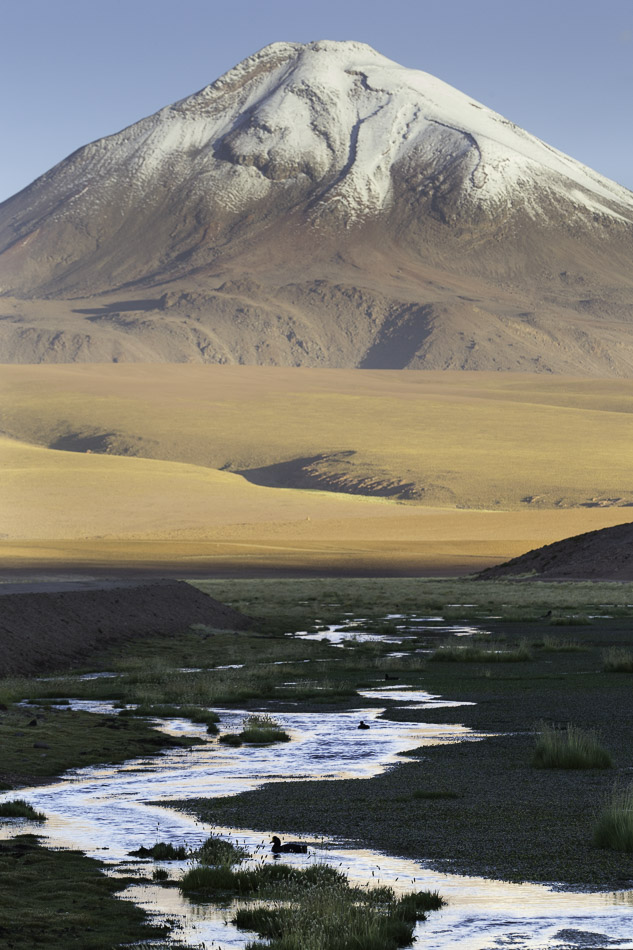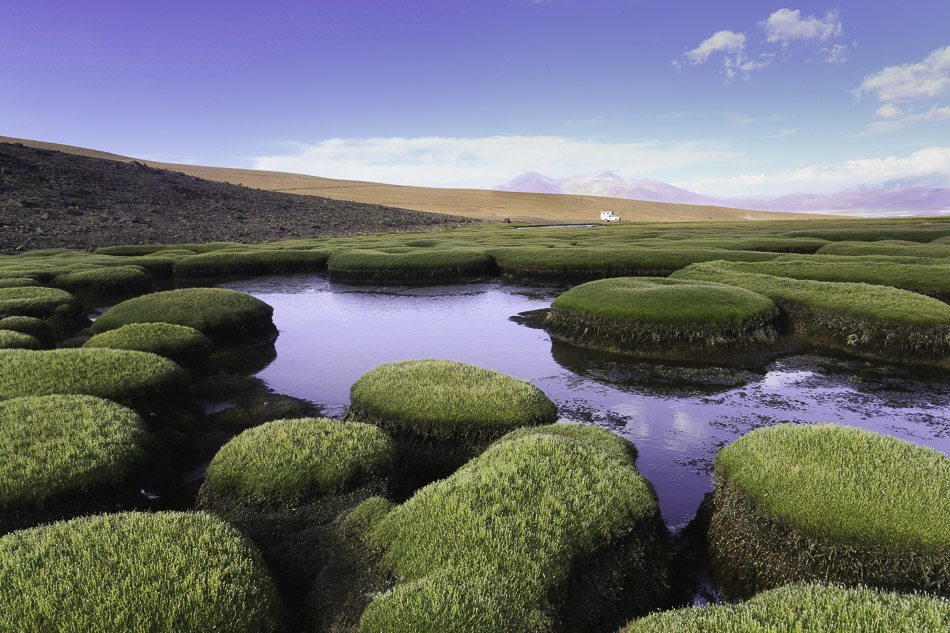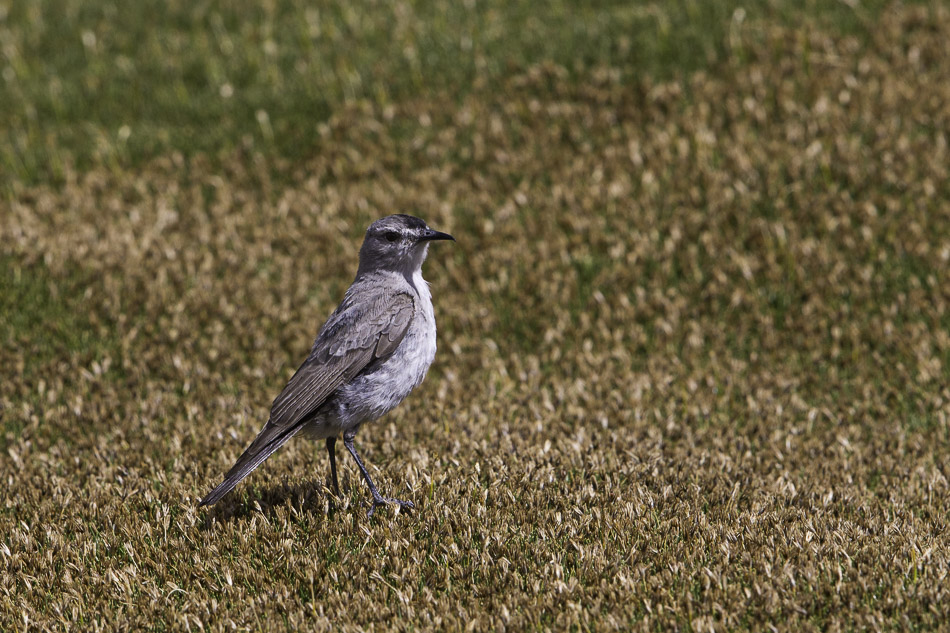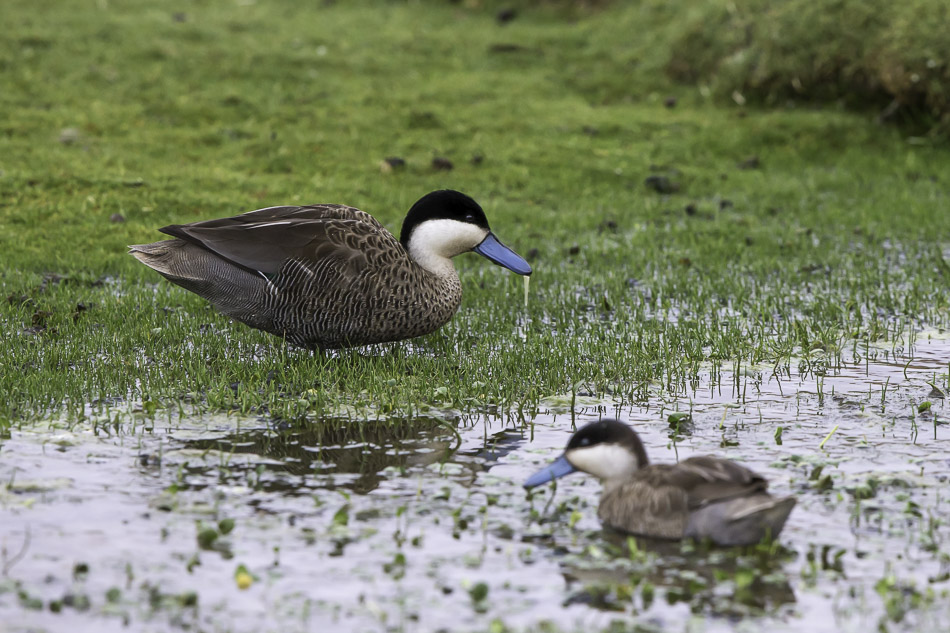Breathtaking scenery in an environment where even taking a breath is difficult, this is the nature of bird watching in the high Andes.
Of the many habitats to be found in the Andes, the one Paula and I have loved finding the most, has been the marshes in the otherwise arid and stony landscape.
These are called Bofedales and are very special.
They are formed either by water flowing directly into them from glaciers high among the mountain peaks or from underground water that oozes to the surface. They can be a marsh, a bog, a wetland, even highland pools, but to Andean people in Argentina, Chile, Peru and Bolivia they are Bofedales and are a valuable resource for both man, his livestock and wildlife.
We came across this Bofedal after crossing the arid plains of the Nevado de Tres Cruces National Park in Chile. Its verdant mirage attracted us from afar. At last we looked upon its circular grassy knolls, clouds floating across the shimmering reflections and were entranced.
We stayed a few days, isolated but not lonely. Guanacos came down to drink and a dozen species of birds as well. Invisible to their mountain eyes, we sat in a hide and watched their comings and goings, as a seemingly deserted landscape gave up its creatures to the life giving oasis in front of us, the birds of the High Andes.
A Black-fronted Ground-Tyrant. We saw up to six individual birds in the area.
This pair of Puna Teal visited us every morning.
Small groups of Greenish-Yellow Finches were always down at the water’s edge.
For our ‘Living Wild in South America’ expedition to this area, a 4 x 4 vehicle is necessary and our Toyota Hilux was admirably suited. An expedition like ours is well equipped, we carry oxygen and have sufficient water and food for at least a week. Birding in the Andes is difficult enough but when searching for birds of the High Andes, we try to minimise risks.






